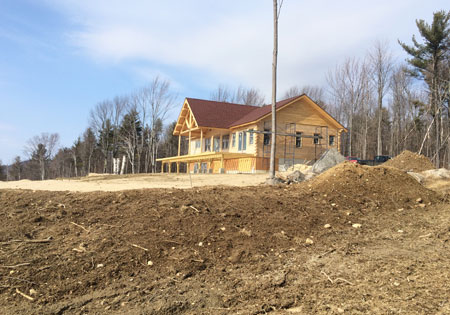Site Selection for Your Log Home - Part One
Posted by Ward Cedar Log Homes in Home Design/Square Footage Log Homes
You can't build your log home without land. It is advisable to make the selection of a building site in conjunction with the selection of your house plan. It is much easier to choose a home that fits your land than to try to adjust the land, by means of expensive grading and excavation, to fit a house plan. For example, you might come across a site in a prime location - one that the builder consider too rocky or hilly to accommodate a standard home. However, if you choose a plan that adapts well to a difficult site, you may be able to pick up a relative bargain.
When considering potential building sites for your log home or cabin, your best advice will likely come from local professionals. An attorney is essential to guide you through local ordinances and help you secure a clear title to the land. Real estate agents, even if you don't buy from them, can tell a lot about living in the community. contractors have a good idea of the value of sites and how to bid. A contractor will also examine land for construction suitability.
Readiness for building - "Unimproved land is land unready for building. To make it ready, water and sewer has to be put into place as well as a roadway, connections to gas, and electrical power sources. Cutting and filling may be necessary in order to build a road and foundation.
Improved land costs more than unimproved land; however it is usually worth it. Comparing the prices of two sites is difficult if one is improved and the other is not. To be certain whether improvement costs will push a lot out of out of your budget range, have a contractor give you an estimate on necessary work needed.
Site Size - Knowing the specifics of your plans, your contractor will be able to tell you how much land to shop for. Local zoning laws may set minimum lot dimensions; a subdivision's partitions may define maximum. In a woodsy area, a smaller plot will provide ample privacy, but because you have little outdoor space, you may opt for a larger piece of land.
Water and drainage - The ideal place to situate a house is on the highest spot on the property so that rain water will drain away from your home. Examine all potential sites for water retention and drainage. Avoid a lot where the log home must be built on a recent landfill or at the base of a hill. The basement or bottom floor of a home built on such ground will almost always be plagued with wetness; special drainage systems can be devised to divert excess water, however they are both a major construction expense and an undependable solution. After a heavy rainfall, you yourself can check for standing water. If the ground is not dry even in normal weather, you may want to look at another site.
Stay tuned for next week as we talk about - Situating your your log home.
It is never too early to start planning your home or log cabin. Get started today by viewing our floor plans and call us at 800-341-1566 or drop us an email. Complete custom log home plans are also available.


Post Your Comment